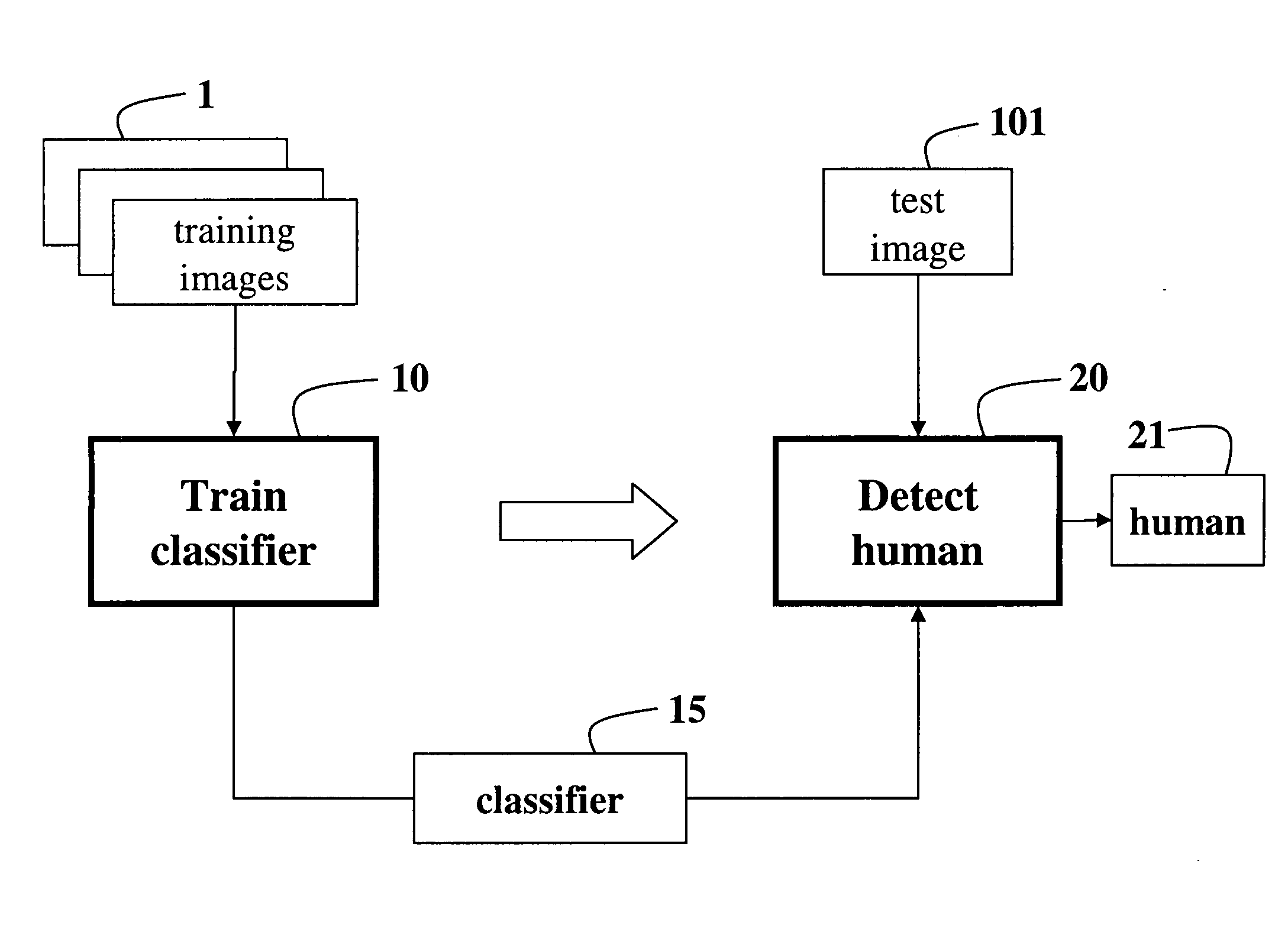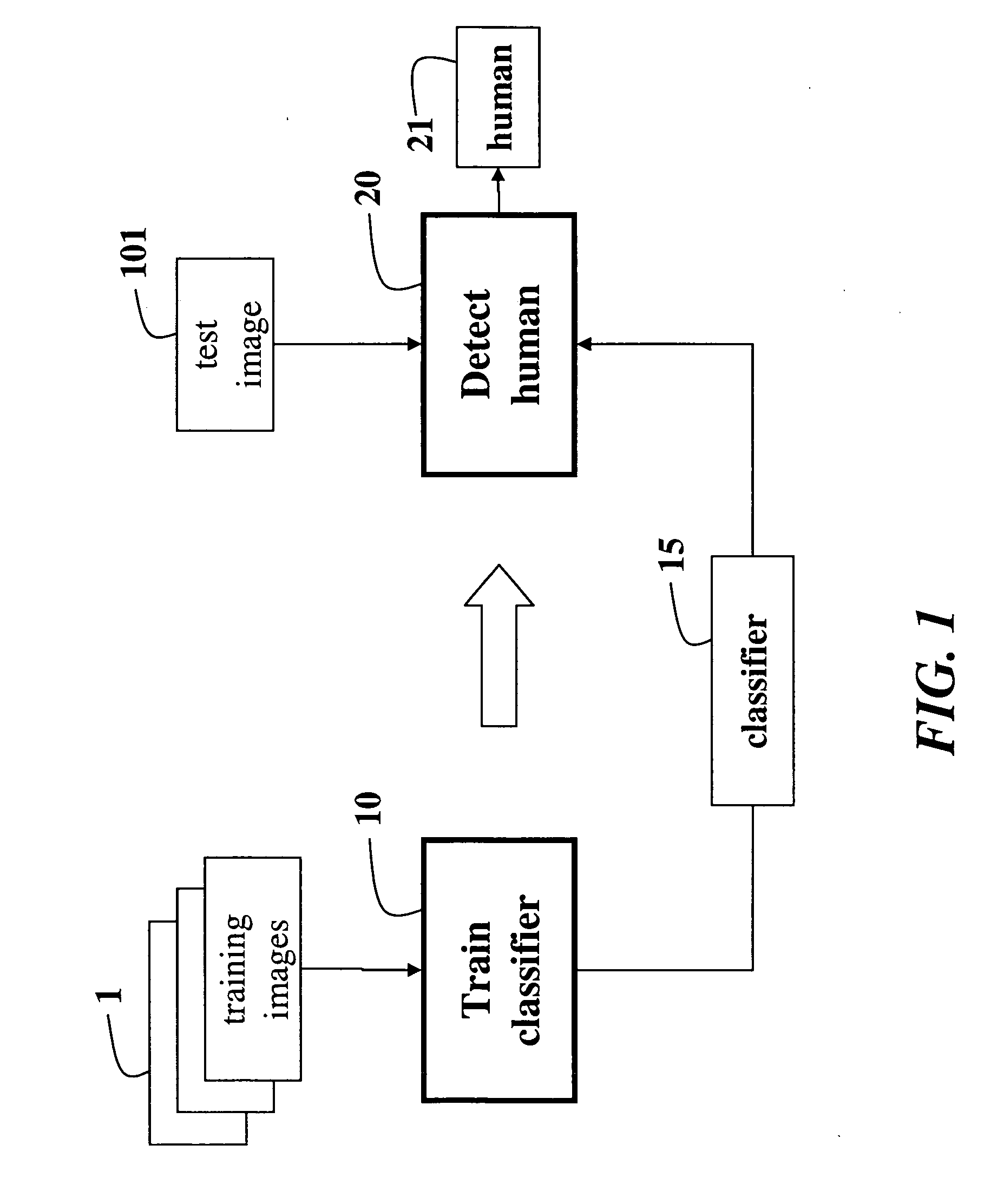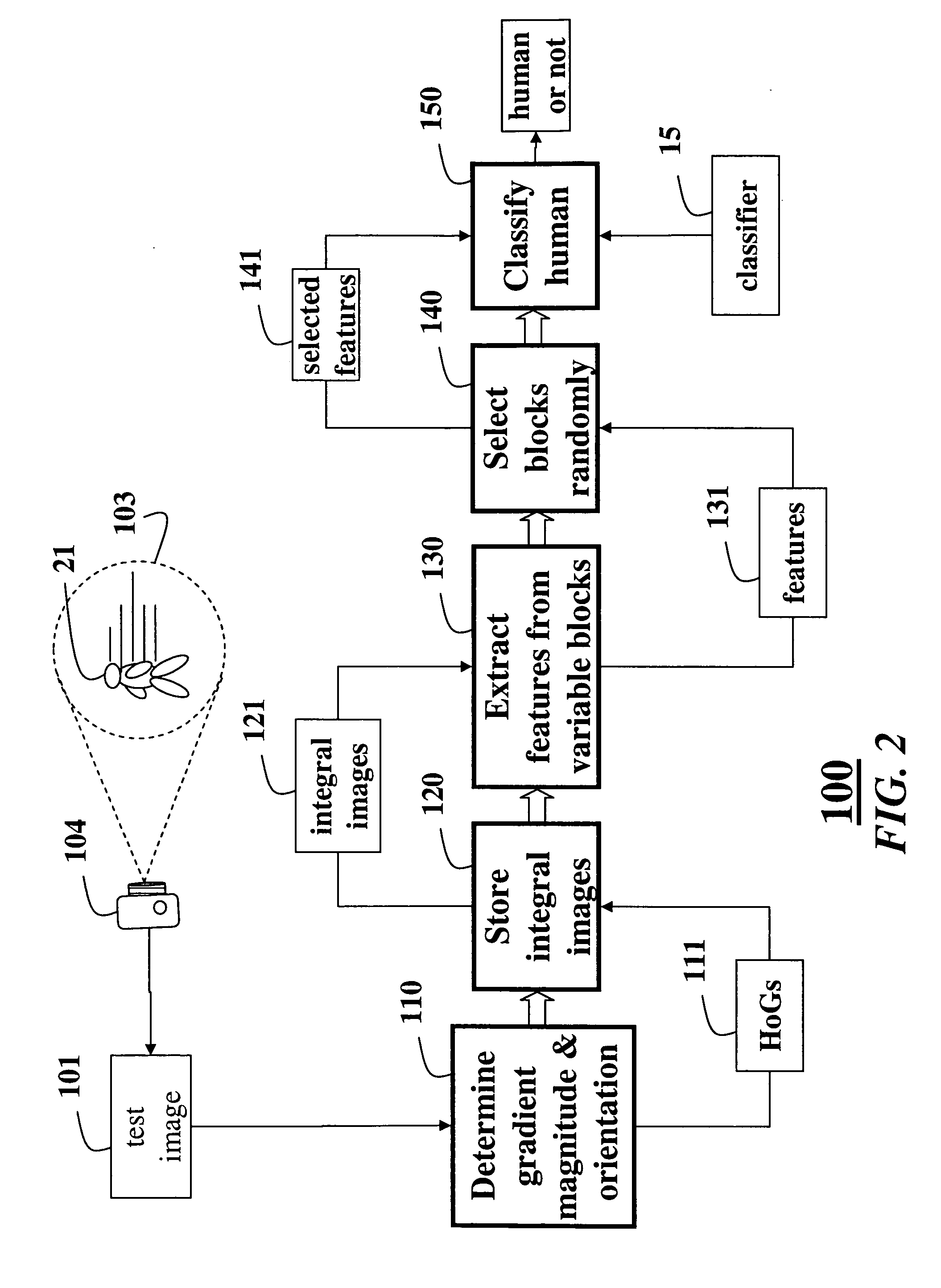Method for detecting humans in images
a human detection and image technology, applied in the field of computer vision, can solve the problems of inability to detect the ‘big picture’ or global features, the method is relatively small, and the difficulty of detecting humans remains. achieve the effect of fast and accurate human detection
- Summary
- Abstract
- Description
- Claims
- Application Information
AI Technical Summary
Benefits of technology
Problems solved by technology
Method used
Image
Examples
Embodiment Construction
[0023]FIG. 1 is a block diagram of a system and method for training 10 a classifier 15 using a set of training images 1, and for detecting 20 a human 21 in one or more test images 101 using the trained classifier 15. The methodology for extracting features from the training images and the test images is the same. Because the training is performed in a one time preprocessing phase, the training is described later.
[0024]FIG. 2 shows the method 100 for detecting a human 21 in one or more test images 101 of a scene 103 acquired by a camera 104 according to an embodiment of our invention.
[0025] First, we determine 110 a gradient for each pixel. For each cell, we determine a weighted sum of orientations of the gradients of the pixels in the cell, where a weight is based on magnitudes of the gradients. The gradients are sorted into nine bins of a histogram of gradients (HoG) 111. We store 120 an integral image 121 for each bin of the HoG in a memory. This results in nine integral images ...
PUM
 Login to View More
Login to View More Abstract
Description
Claims
Application Information
 Login to View More
Login to View More - R&D
- Intellectual Property
- Life Sciences
- Materials
- Tech Scout
- Unparalleled Data Quality
- Higher Quality Content
- 60% Fewer Hallucinations
Browse by: Latest US Patents, China's latest patents, Technical Efficacy Thesaurus, Application Domain, Technology Topic, Popular Technical Reports.
© 2025 PatSnap. All rights reserved.Legal|Privacy policy|Modern Slavery Act Transparency Statement|Sitemap|About US| Contact US: help@patsnap.com



